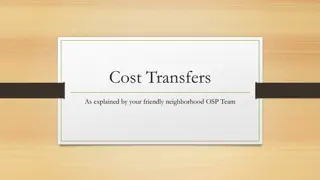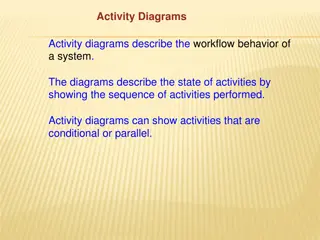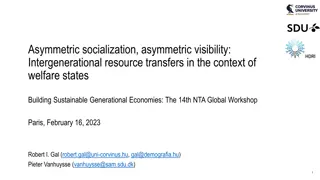Understanding Energy Transfers with Sankey Diagrams
Sankey diagrams are visual tools that depict energy transfers within a system, offering insights into efficiency and energy distribution. By examining the width of arrows representing energy flow, one can analyze useful and wasted energy outputs. Inefficient systems show a disproportionate amount of wasted energy compared to useful energy, as illustrated in examples like a light bulb's energy conversion. Learn how to draw a Sankey diagram step by step and explore the significance of these diagrams in evaluating energy efficiency.
Download Presentation

Please find below an Image/Link to download the presentation.
The content on the website is provided AS IS for your information and personal use only. It may not be sold, licensed, or shared on other websites without obtaining consent from the author. Download presentation by click this link. If you encounter any issues during the download, it is possible that the publisher has removed the file from their server.
E N D
Presentation Transcript
SANKEY DIAGRAMS
Sankey Diagrams Sankey diagrams show the energy transfers taking place in a device, they have in a way the same idea as energy diagrams but with a difference of showing the amount of each energy that goes into and out of the process. Using them gives us a better understanding of the nature of the system and its efficiency.
Sankey Diagrams Useful energy Useful energy Input Energy Input Energy Here is an example of a Sankey diagram for a light bulb. The width of the arrow shows the energy involved in joules, let say we have 100 joules of electrical energy. The useful energy output is shown horizontally. Here it is 10 joules of light. The wasted/dissipated energy output is shown vertically (up or down). Here it is 90 joules of heat. Dissipated energy
Efficiency and Sankey Diagram From the previous example we can see that the wasted energy is much more than useful energy. Therefore we can say that the light bulb used is not efficient just by looking at the Sankey diagram.
How to draw a Sankey Diagram? Let us say we want to draw a Sankey Diagram for some fireworks. A firework converts 100J of chemical energy into 80J of light energy and 20J of sound energy. So we start with step one, the base of the diagram which is a rectangle with the input energy (chemical).
How to draw a Sankey Diagram? (Cont.) Step two, we draw the useful energy arrow straight as in the diagram.
How to draw a Sankey Diagram? (Cont.) Step three, we draw the wasted energy arrow pointing downward as in the diagram. Note that the total energy input must equal t the total energy output.























